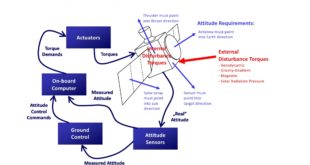Nanomaterials have emerged as a groundbreaking field of study, unlocking new possibilities in various scientific and technological domains. These materials, engineered at the nanoscale, exhibit unique physical, chemical, and electrical properties that differ from their bulk counterparts. Nanomaterials offer exceptional control over material characteristics and enable precise manipulation at the …
Read More »Driving into the Future: Exploring the Latest Radar Technologies Revolutionizing Autonomous Vehicles”
Autonomous vehicles have taken the automotive industry by storm, promising a future where cars navigate themselves, reducing accidents and congestion while enhancing transportation efficiency. These vehicles have the potential to revolutionize transportation, making it safer, more efficient, and more accessible. Autonomous control of a vehicle makes driving safer and comfortable. …
Read More »Beyond the Green Canopy:Synthetic Aperture Radar (SAR) and its Foliage Penetration Capabilities
When we gaze at the lush green canopies of forests, it’s easy to assume that what lies beneath remains hidden from our view. However, thanks to technological advancements in remote sensing, Synthetic Aperture Radar (SAR) has emerged as a powerful tool capable of peering through this dense foliage. In this …
Read More »Demystifying Electronics Product Manufacturing: Exploring EVT, DVT & PVT Engineering Validation Processes
The Consumer Electronics manufacturing industry is involved in the manufacturing and distribution of electronic items, including televisions, telephones, video cameras, alarm clocks, stereo items, MP3s, VCRs, and DVD players Consumer Electronics Manufacturing involves a series of interconnected processes that contribute to the creation of electronic devices for personal use. The …
Read More »Unveiling the Dragon’s Eyes: China’s Cutting-Edge Counter Stealth Radar Technology
In recent years, China has made remarkable advancements in counter stealth radar technology. This cutting-edge technology has the potential to neutralize stealth aircraft, which are considered to be the most lethal and sophisticated weapons systems in modern warfare. In this article, we will explore China’s progress in this field and …
Read More »DARPA BRIDGES Next Generation Antennas: Innovative Concepts for Enhanced Sensing in the Department of Defense
Introduction: In the ever-evolving landscape of defense technology, one key component stands out as the linchpin of accurate and reliable sensing systems: antennas. These unassuming devices are the unsung heroes of the Department of Defense (DoD), responsible for transmitting and receiving electromagnetic signals that underpin communication, surveillance, navigation, and more. …
Read More »Revolutionizing Security, Military, and Communications: The Disruptive Potential of Terahertz Technology
Terahertz is a fascinating technology that has been around for decades, but it has only recently gained significant attention due to its unique capabilities and potential applications. Terahertz waves are electromagnetic waves with frequencies lying between microwave and infrared regions of the spectrum (100 to 3000 gigahertz frequencies or 0.1 …
Read More »Designing RF and Microwave Products for Space Applications: Balancing Customer Requirements with Technical Solutions
In today’s era of satellite communication and space exploration, RF and microwave products play a vital role in enabling successful missions. These products need to meet a wide range of customer requirements and technical solutions while maintaining reliability and durability in harsh space environments. This article will discuss the critical …
Read More »Closing the Gap: How the US Military’s Next-Generation Electronic Warfare Systems Are Reducing Russia’s Military Edge
All modern forces depend on unimpeded access to, and use of, the EM spectrum in conducting military operations. Therefore, there is a requirement to gain and maintain an advantage in the electromagnetic spectrum by countering adversary’s systems and protecting one’s own systems. Adversary can disrupt and degrade the navigation systems …
Read More »Navigating the Skies: The Importance of Attitude Determination and Control Systems(ADCS) in Microsatellite and Nanosatellite Missions
Nanosatellite and microsatellite refer to miniaturized satellites in terms of size and weight, in the range of 1-10 Kg and 10-100 kg, respectively. These are the fastest growing segments in the satellite industry. ‘CubeSat’ is one of the most popular types of miniaturized satellites. CubeSats were made possible by the …
Read More » International Defense Security & Technology Your trusted Source for News, Research and Analysis
International Defense Security & Technology Your trusted Source for News, Research and Analysis




